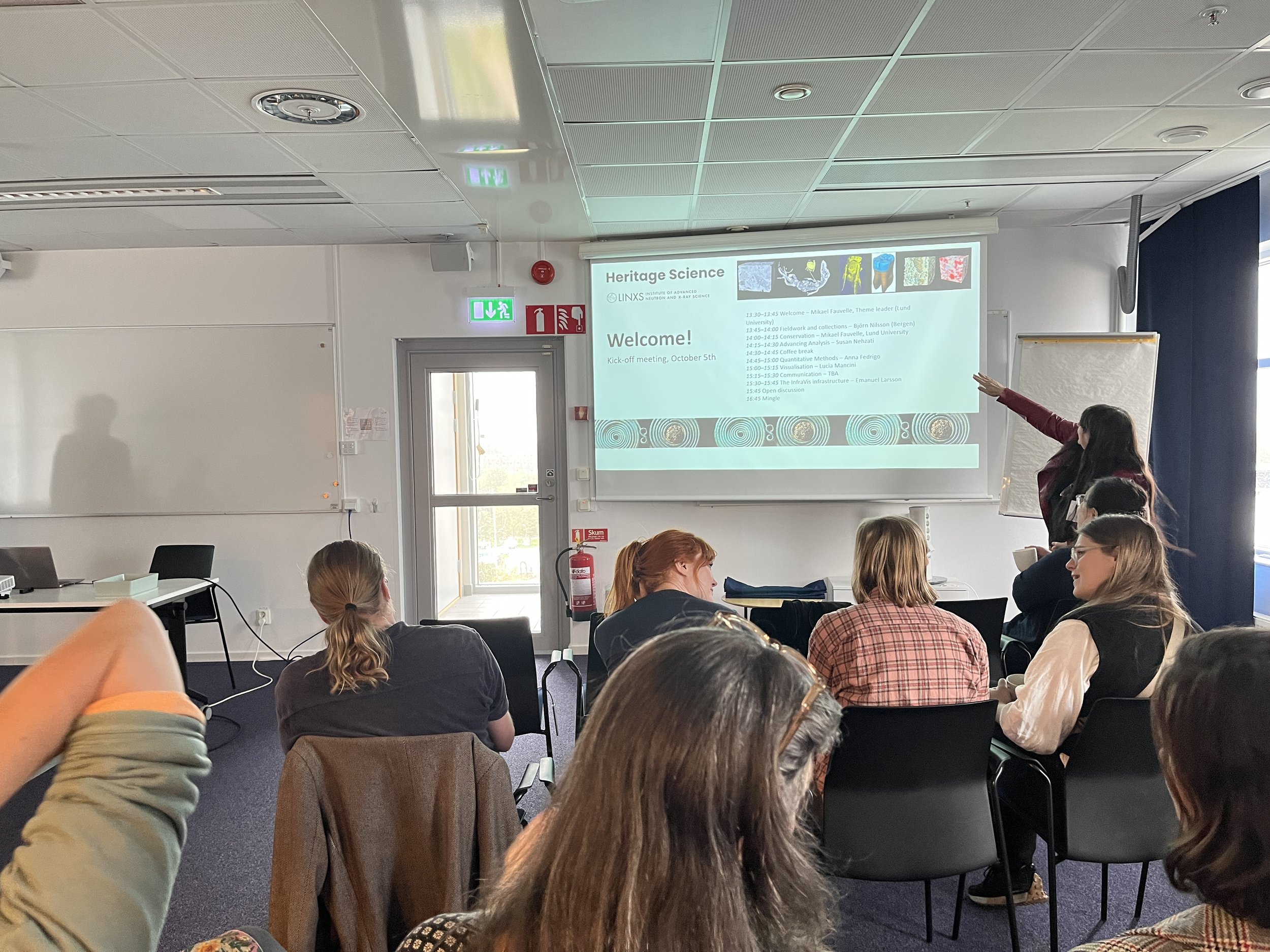The Heritage Science Theme is off to a great start!
Theme leader Mikael Fauvelle is extremely pleased with the recent kick-off of the Heritage Science theme. Scholars from different universities, the private sector and many master students were in attendance during the two days at LINXS, MAX IV and ESS, 5-6 October.
Mikael Fauvelle is researcher at the Department of Archaeology and Ancient History, Lund University, and theme leader.
– It was great to see such a diverse audience. It shows that the focus of the theme is hitting the right marks in terms of relevance and timeliness, says Mikael Fauvelle, theme leader and researcher at the Department of Archaeology and Ancient History, Lund University.
During the two-day event, the participants, who came from disciplines such as engineering, chemistry, museum studies, and contract archaeology, the private sector, the Swedish National Heritage Board, and other universities such as the University of Gothenburg and the University of Bergen, got the chance to listen to presentations from the six working groups that make up the theme.
The working groups are: 1. Fieldwork and Collections, 2. Conservation, 3. Advancing Analysis, 4. Quantitative methods, 5. Visualisation and 6. Communication. One of the days also included a visit to ESS and MAX IV to get people familiar with the different beamlines and instruments, and possible techniques one can use to explore cultural and heritage science.
Mikael Fauvelle was very pleased to see so many master students at the kick-off, both from Lund and also from conservation studies at the University of Gothenburg. The large attendance has now made the theme consider organising a special training session directed especially towards these master students.
– It is lovely to see students already at master level engaging with us, and this quite complicated science. Hopefully they can acquire knowledge and skills through our theme, which can give them an advantage for future PhD studies related to X-rays and neutrons.
Participants the Heritage Science kickoff meeting.
Next steps: collection and conservation conference, and sessions at the European Archaeological Association
Now the kick-off is over, Mikael Fauvelle and his theme members are turning their minds towards new events and activities, to make sure that the theme is not losing steam after such a great start.
– We have a lot of exciting things planned for the year ahead, including a special session on synchrotron and neutron research to be held at the annual meeting of the European Archaeological Association in Rome, as well as a Collections and Conservation focused conference in Bergen.
– We will also continue to build up our networks with the focus of raising the profile of heritage science work at MAX IV and eventually ESS.
Read more about the Heritage Science theme


